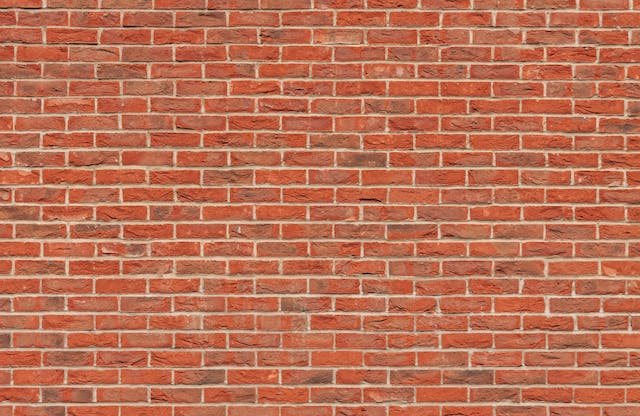A brick is a type of block that is used in building walls, pavements, and other elements in masonry construction. They are very versatile material and serve lots of purposes, such as adding stability and strength to a building, and as well as aesthetic presence, especially in homes. They are very popular from the olden days up to modern times we have today due to their low cost and durability. Most of the time, bricks are laid flat and are bonded to form a structure. Most bricks that you can find are about eight inches long and four inches thick.
Like other construction materials, bricks also come in different types. These are based on materials such as clay, concrete blocks, lime, fly ash, and more. File field identification of bricks for their properties, uses and suitability for different construction works are important. If you are doing some construction in your home soon and thinking of using bricks, do you know what type is appropriate for you? If you’re not sure, then we’re here to help you. Today, we are giving you a list of the different types of bricks and their uses.
Sun-Dried or Unburnt Clay Bricks
Sun-dried or unburnt clay bricks are less durable and usually used for temporary structures. There are three steps in preparing them, which arethe clay, molding, and drying. After the bricks are molded, they are subjected to sunlight and are dried using heat from the sun. It means that they are not that strong and have less resistance to water and fire. If you are looking into building a permanent structure at home, sun-dried or unburnt clay bricks should not be used because they can easily be broken and damaged.
Burnt Clay Bricks
Burnt clay bricks are created by placing molded clay into a kiln and firing it up. These bricks can be used in a lot of ways, even if they are not the most exciting bricks to use in the world. Burnt clay bricks are classified into four types, which are first class, second class, third class, and fourth class.
- First Class Bricks: First class bricks are those good quality ones that are molded by table-molding and burnt in large kilns. These bricks have a standard shape, sharp edges, and smooth surfaces. They are also more durable, and they can be used for permanent structures. However, they are also more expensive than other classes.
- Second Class Bricks: These are moderate quality bricks that are molded by the ground-molding process. They are also burnt in kilns. Due to ground molding, second class bricks do not have smooth surfaces and sharp edges. These bricks also have irregular shapes due to unevenness in the ground. But these can give the best results, especially when it comes to durability and strength. You will just need to do some smooth plastering on the brick structure.
- Third Class Bricks:These bricks are poor quality and are used for temporary structures, just like unburnt bricks. These are also not suitable for rainy areas. Third class bricks are ground-molded and burnt in clamps. Their surfaces are rough and have unfair edges.
- Fourth Class Bricks:These are very poor quality bricks and are not used as bricks for structures. These bricks are usually crushed and used as aggregates in the manufacturing of concrete. They are obtained by over burning, making them brittle. It means that they can easily break and not suitable as a construction material.
Fly Ash Bricks
Fly ash bricks are made by using fly ash and water. They have better properties compared to clay bricks. They are also resistant to freeze-thaw cycles. Fly ash bricks have a high concentration of calcium oxide, which is used in cement production, thus, being called a self-cementing brick. These bricks are lightweight and also reduces the self-weight of structures.
The best things about fly ash bricks are their high fire insulation, high strength, uniform sizes, lower water penetration, and they do not need to be soaked before use in construction.
Concrete Bricks
Concrete bricks are made with cement, sand, coarse aggregates, and water. They can also be made in different sizes, depending on what is needed in the construction. The advantage of this type of brick is that it can be made at the construction site.
Aside from that, concrete bricks can also reduce the quantity of mortar needed and can be made to provide different colors as pigmented during its production. Concrete bricks are used for the construction of masonry, framed buildings, fences, and facades. It can also give an excellent aesthetic presence, especially for houses. For other types of bricks that are suitable for houses, read the Types of Bricks Used In Home Construction.
Engineering Bricks
Engineering bricks are used in special applications where strength, acid resistance, frost resistance, and low porosity is needed. Engineering bricks are mostly used for basements where water or chemical attacks are prevalent, and as well as for damp proof courses.
Sand Lime or Calcium Silicate Bricks
Calcium silicate bricks or sand-lime bricks are made of sand and lime. They are used for different purposes in construction industries, including masonry works, ornamental works in buildings, and more.
These are the different types of bricks that you can choose from. If you are still unsure of what type of bricks you should use, it’s better to ask for a professional suggestion. There’s a large selection of residential bricks that can be offered to you, and some might even come in different colors and styles. We hope the information we shared here helped you in knowing more about the different types of bricks and their uses.

